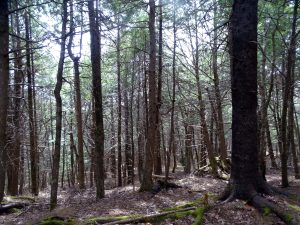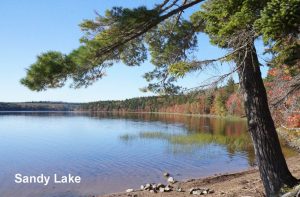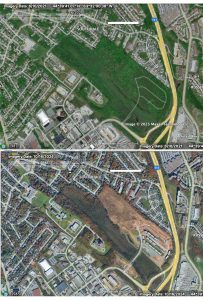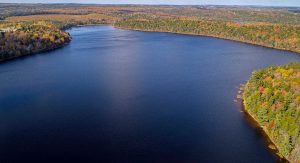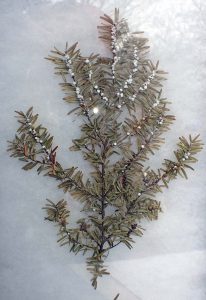
Deep water oxygen levels in Sandy Lake towards the end of the summer stratification period. (Click on image for larger version.) The latest measurements, by St. Mary’s University limnology folks, recorded the lowest values yet observed. All of these data, and other Water Quality data we collected or compiled were “ignored” in the NS Gov/HRM Background Studies for Sandy Lake. View Post of July 25, 2025 for more details.
Click on image for a larger version
Update Nov 13, 2025: For the SL Volunteer observations, I modified the symbols to show which observations were conducted in collaboration with and according to the protocols of the HRM LakeWatchers Program. That followed a discussion with a Clayton Developments rep. at the open house in which he expressed concerns about our methodology and commented that their own observations (which he said were confidential and could not be shared) have not shown similar low oxygen values. Note that all of the very low oxygen (hypoxic) values (2 mg/L and less) in the diagram were observed by currently active (as opposed to retired) academic researchers (*Doucet and SMU observations) or by Sandy Lake Volunteers in collaboration with and following the procedures of the Halifax LakeWatchers program; those data are also reported on the Halifax LakeWatchers website. The anomalously high value in 2023 occurred following heavy precipitation/flooding which disrupted the summer stratification; the values dipped again the next year. Even in 2023, the peculiar “Metalimnetic Oxygen Minimum” in shallower waters was retained, and was recorded (but not commented on) by Stantec in their Watershed Report – see Comments Doc, Fig 1, page 3, and Section 5B, pages 13-15
UPDATE NOV 13, 2025:
View:
– Halifax residents raise traffic, environmental concerns with Sandy Lake development
Haley Ryan · CBC News
– 8,000 housing units on the shores of Sandy Lake in Bedford? Neighbours have their say
Jen Taplin for the Chronicle Herald
– Residents raise concerns about proposed development near Halifax’s Sandy Lake
By Jesse Thomas CTV News, with Video.
ORIGINAL POST
Received via a local resident of Sandy Lake:
—-Notice of Public Open House—-
A public open house is taking place on Wednesday, November 12th, 2025 at Bedford United Church, 1200 Bedford Highway, Bedford. The purpose is to share information on the planning process and development proposals by landowners, and to collect public feedback. Three sessions are being held at the following times:
10am to 12pm
2pm to 4pm
6:30pm to 8:30p.m. Continue reading


